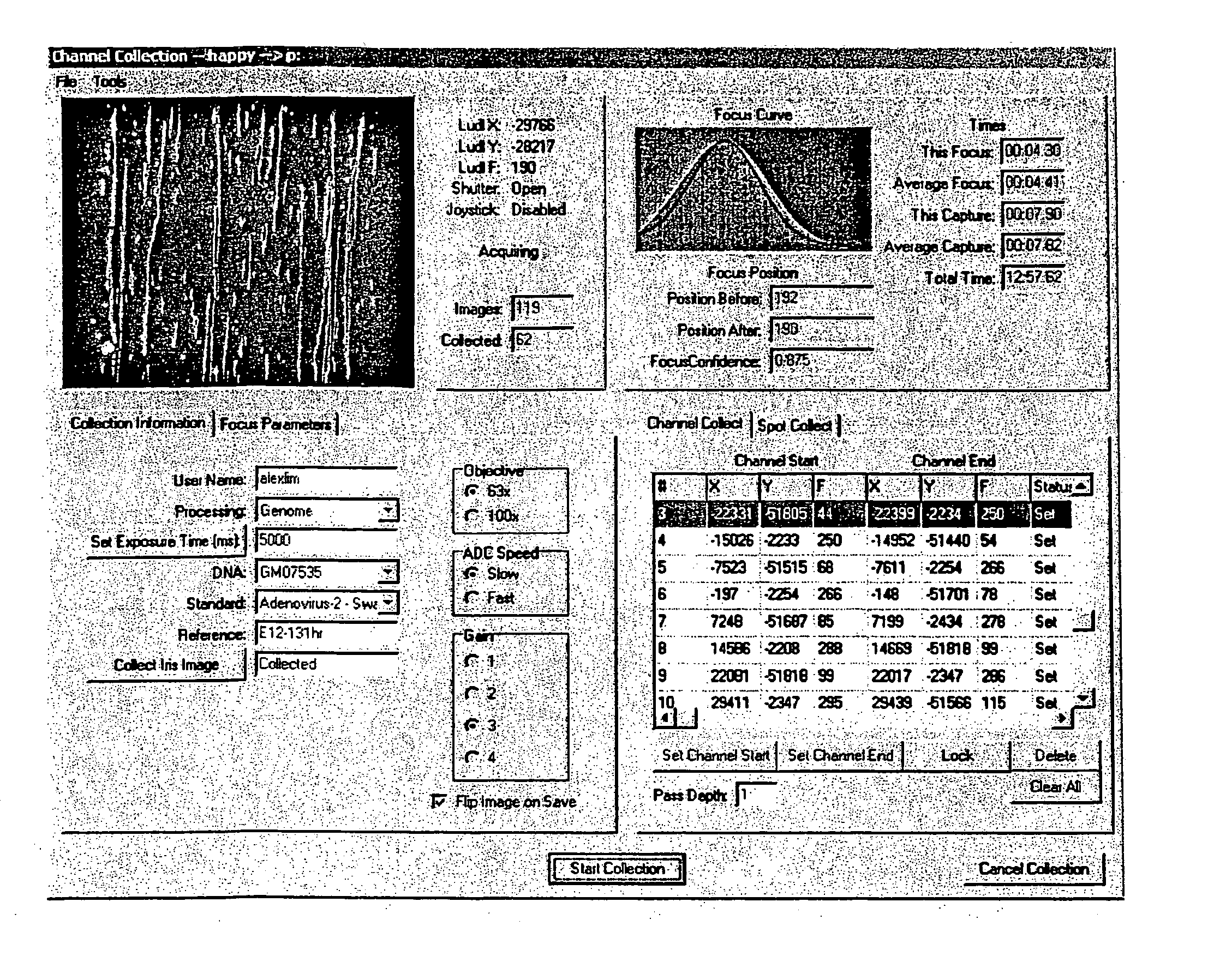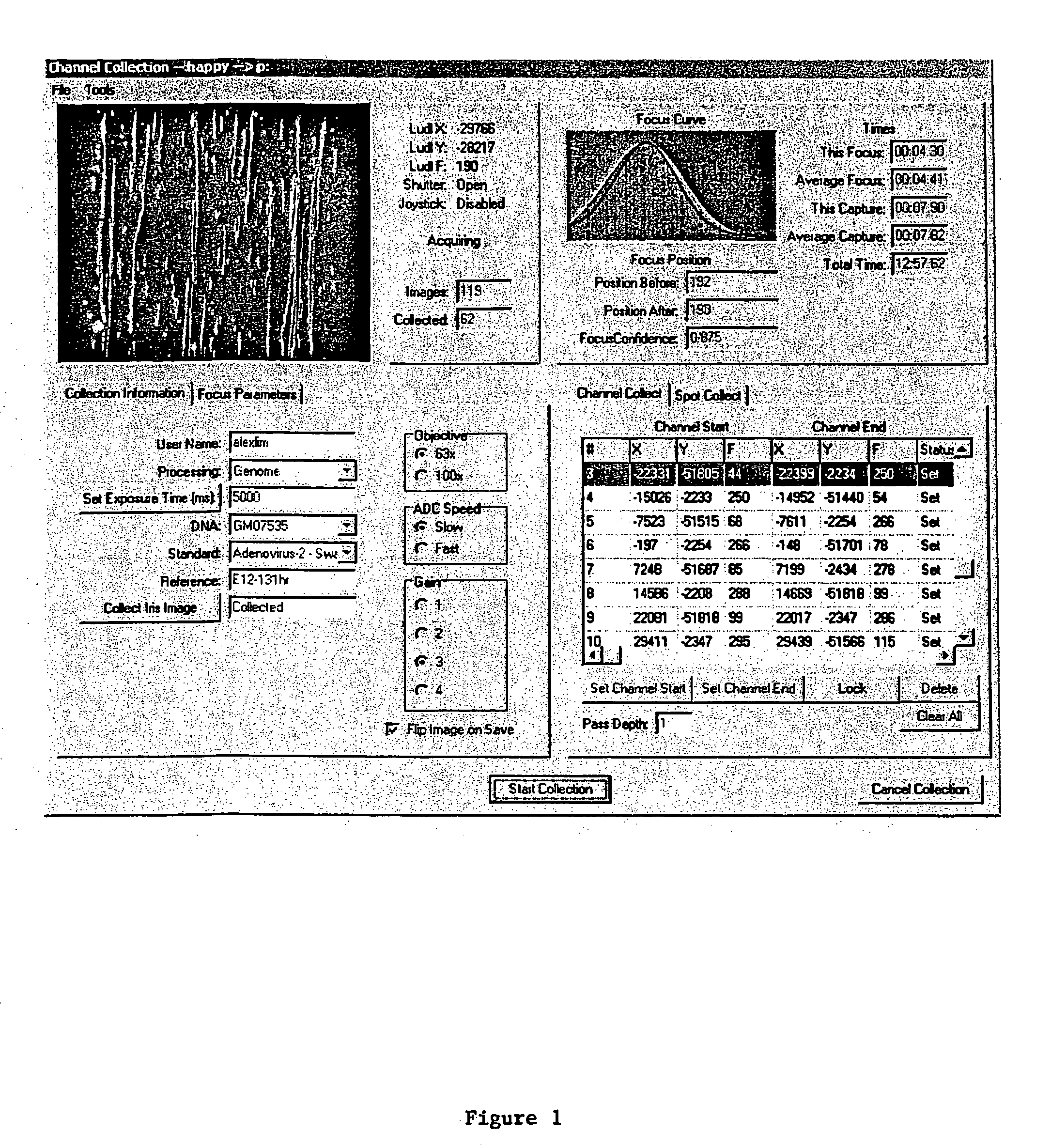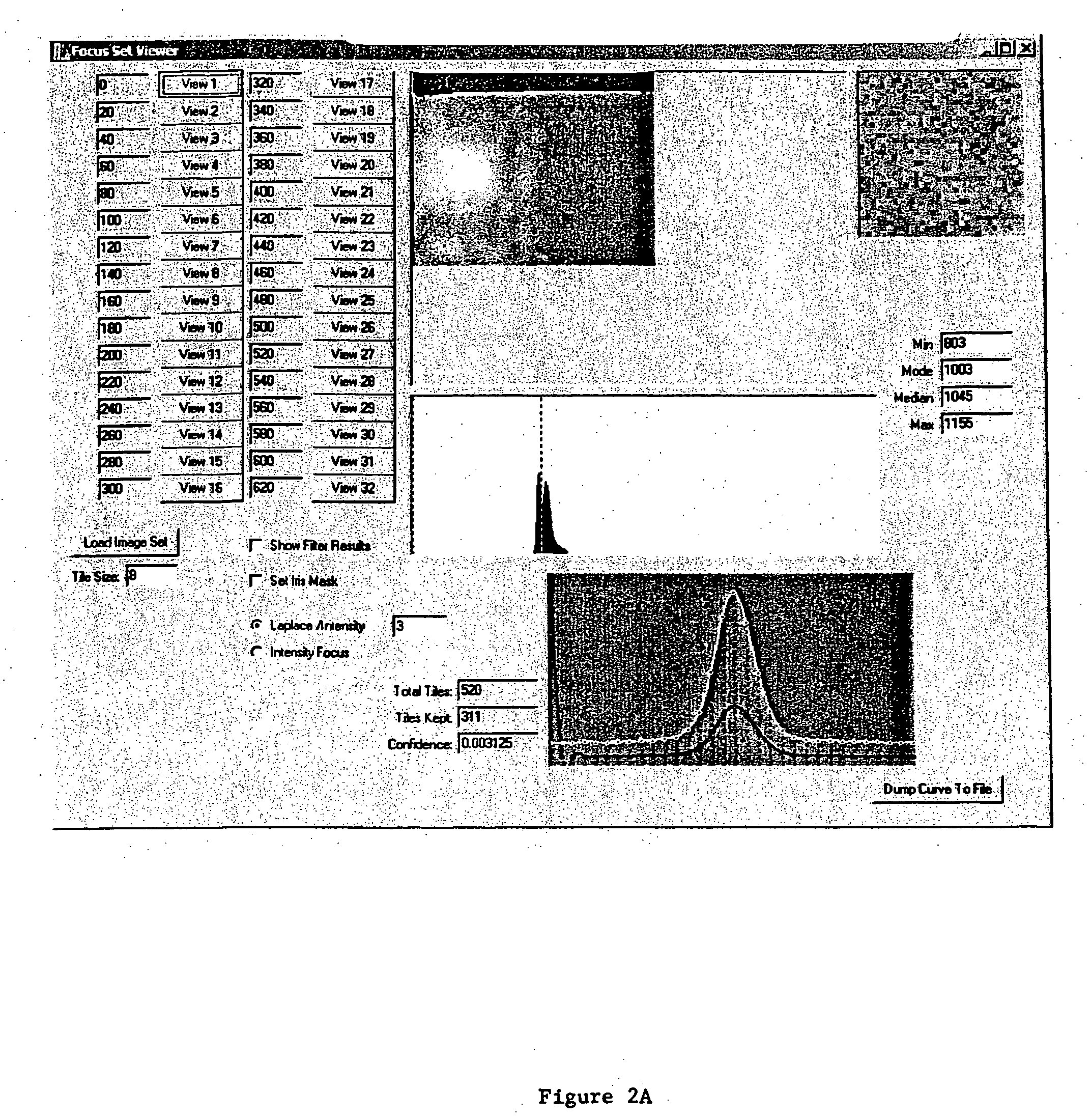Automated imaging system for single molecules
- Summary
- Abstract
- Description
- Claims
- Application Information
AI Technical Summary
Benefits of technology
Problems solved by technology
Method used
Image
Examples
example 1
The Automated Focus Component Routine
[0111] The automated focus component routine is written to work with an interface to a CCD camera. Since more than one type of CCD camera may be used, C++ was used to develop an abstract class to encompass a variety of camera classes. During the setup phase the type of camera is queried from the object to determine both allowed binning values and optimal exposure times. The automated focus component object also assumes the existence of a translatable Z axis (motorized objective column), in various embodiments with LUDL access. Some classes that the automated focus component object uses are not documented here (SmoothingSplines for example) but are well understood in the art. The specifics of the LUDL stage controller and varying CCD camera drivers are also accessed through classes (as mentioned supra) and provide for a clearer and more flexible solution.
example 3
Code for the Overlap Program of the System and Method Disclosed
[0112] The command line used to run the program for sub-images S1 and S2, and CCF region shown in FIGS. 3A-C and discussed below is: [0113] overlap raw1-2212017.omi raw1-2212016.omi-13 810 [0114] where (−13, 810) is the initial overlap estimate, meaning (0,0) in S1 is at (−13, 810) in S2. The output is: [0115] raw1-2212017.omi raw1-2212016.omi −35 774 0 −35.22 774.42 0.700 0.361
which indicates that the true offset is (−35, 774) and overlap is good (with zero status). The sub-pixel alignment from fitting the two-dimensional parabola is (−35.22, 774.42) with a correlation peak of 0.700 and a total variance of 0.361. Note that (−13, 810) minus (−35, 774) equals (22, 36) which is the (sub-)offset of the correlation peak from the center of the cross-hairs.
PUM
 Login to View More
Login to View More Abstract
Description
Claims
Application Information
 Login to View More
Login to View More - R&D
- Intellectual Property
- Life Sciences
- Materials
- Tech Scout
- Unparalleled Data Quality
- Higher Quality Content
- 60% Fewer Hallucinations
Browse by: Latest US Patents, China's latest patents, Technical Efficacy Thesaurus, Application Domain, Technology Topic, Popular Technical Reports.
© 2025 PatSnap. All rights reserved.Legal|Privacy policy|Modern Slavery Act Transparency Statement|Sitemap|About US| Contact US: help@patsnap.com



